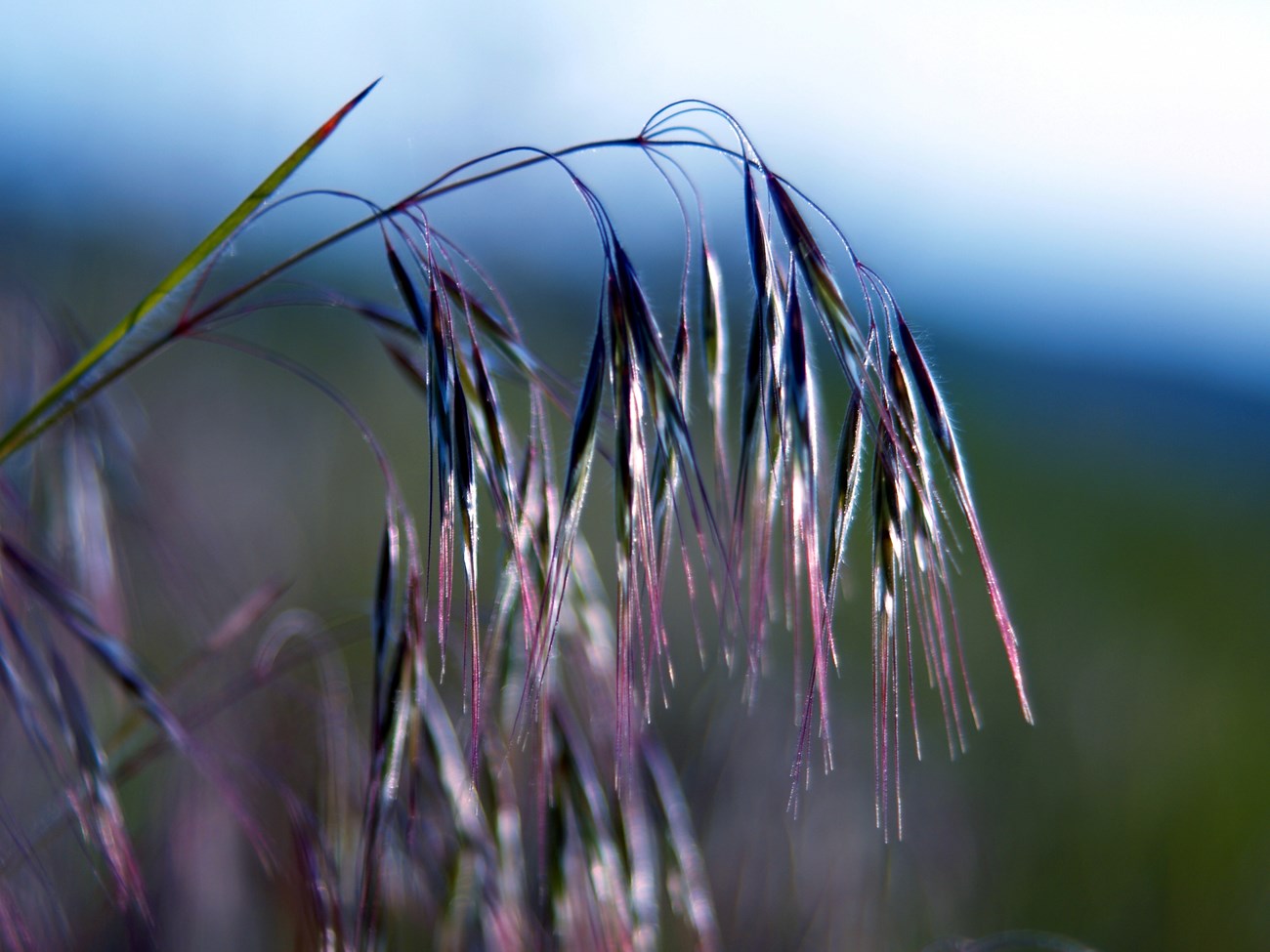Last updated: July 29, 2025
Article
Cheatgrass

NPS
In the vast lands of the Western United States, a quiet invader has taken root and altered the natural order. Cheatgrass (Bromus tectorum), native to northern Africa, southwest Asia, and much of Europe, was a stowaway in European settlers' grains in the 1800s. As an aggressive invasive species capable of rapid reproduction, it took advantage of overgrazed land and depleted native grasses to establish quickly and begin its conquest of the West. Cheatgrass is now found in all 50 states, many provinces of Canada, and parts of Mexico.
Identification
Ranging from 15 to 60 cm (6–24 in) tall, cheatgrass supports a nodding seed head that has clusters of hairy seeds, often giving the grass a drooping, arch-shaped form. It sports long, flat, and narrow leaves that are bright green and hairy in the early spring and transition to red and light tan as it matures.
One lookalike commonly confused with cheatgrass is Japanese brome (Bromus japonicus). It has the same drooping arch appearance, but does not become red or tan as it matures. Like Japanese brome, great brome (Bromus diandrus) and oat (Avena sativa) are also nonnative lookalikes to cheatgrass, whereas a native lookalike is needlegrass (Eriocoma nelsonii).
Habitat
Cheatgrass can grow in any soil type, but it prefers dry, well-draining soil. While it prefers lower elevations between 150 and 1,800 m (500–6,000 ft), it can still conquer elevations outside of this range. In western states, lower elevations in the Columbia Basin, Snake River Basin, and the Great Basin are more susceptible to cheatgrass takeover.
Cheatgrass also succeeds in disturbed areas, especially after wildfires. This is because cheatgrass efficiently consumes the nitrogen and water that remain in the topsoil after fires, making it difficult for natives to regenerate post-disturbance. Since cheatgrass germinates in the winter, in burned areas it outcompetes native plants that may germinate later in spring. Additionally, cheatgrass can invade wheat fields, cheating farmers out of their full harvests. This explains the origin of cheatgrass's name, because it essentially “cheats” other species out of nutrients thanks to early germination.

NPS/N. Pagel-April
Reproduction
Cheatgrass reproduces by seed, which is spread widely by animals. With the help of clingy barbs and long awns, cheatgrass seeds hitch free rides on animal fur or our clothes, only to deposit wherever we unknowingly brush them off. These seeds stay viable for up to 2 to 3 years, and once they have found a suitable home, they grow in clusters capable of yielding up to 10,000 plants in one square meter! These clusters can eventually become the primary species over a large area of land, which is known as a monoculture.
Not only does cheatgrass fill up a space, but it also establishes quickly. The seedlings normally start on drier south-facing slopes that receive more sun and then spread with the help of natural disturbances and their tenacious seeds.
Vicious Cycle
Since cheatgrass is a winter annual, it has matured by the time warm weather and wildfires are prevalent. Once wildfires cut through the land, the seeds of cheatgrass are already at work establishing themselves in the soil while most of the native plants, in their early stages of life, struggle to compete due to a lack of resources and space already consumed by cheatgrass. Wildfires essentially clear up land and infuse nutrients into the soil that fuel the rapid growth of cheatgrass into monocultures.
This cheatgrass-wildfire cycle escalates, causing a positive feedback loop: with more cheatgrass established, native plants have less room to accumulate, and cheatgrass uses the available soil moisture to produce more seeds. In turn, the new seedlings increase fire risk when they mature and die off between April and June, leaving behind large amounts of fuel for wildfire.
Stemming the Invasion
Jonathan Amegin, a botanist at Lava Beds National Monument, explains the park’s strategy for cheatgrass: “Reintroduction of native vegetation is key to further prevention of cheatgrass invasions. At Lava Beds we're re-seeding and planting sagebrush, perennial grasses, and native forbs in specific areas that we've treated with a pre-emergent herbicide, which suppresses annual grasses such as cheatgrass.” With the help of herbicides, replanting native species, and continued management, many locations invaded by cheatgrass can be reclaimed by native plants.
Where to See
Cheatgrass occurs in all six parks of the Klamath Network.
Learn More

Prepared by Camille Zimmerman, Southern Oregon University intern
NPS Klamath Inventory & Monitoring Network
Southern Oregon University
1250 Siskiyou Blvd
Ashland, OR 97520
Featured Creature Edition: July 2025
